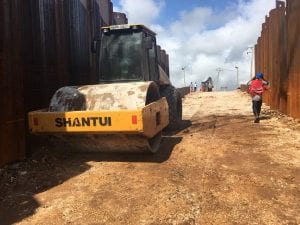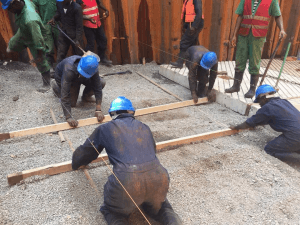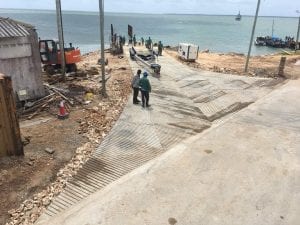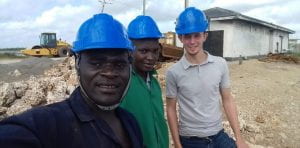Year in Industry: EA Piling In Africa
Engineering Design student Joe McFarlane tells us about his Year in Industry in Uganda and Kenya project managing a landing bay project.
Joe McFarlane has just returned from his Year in Industry in Uganda and Kenya. As well as having a significant impact on the company’s processes and submitting a range of successful tenders, he spent six months project managing a landing bay project. Joe was the youngest and most senior person on site, managing a team of 50 people. The company have already asked him back when he graduates.
Here’s Joe’s experience:
I spent my Year in Industry working for East African Piling in Uganda and Kenya. The company specialises in a variety of piling solutions for private and public infrastructure markets across East Africa.

At first I was mainly working on design and costing proposals for upcoming projects. Services offered include rotary bored piling, continuous flight auger piling, sheet piling, soil nailing, soil anchors and pile load and integrity testing. Through the year I contributed towards 11 bids, 4 of which the company won.
After this stint working on tenders, I moved on to become the Project Manager of a new marine slipway on the coast of Kenya. The slipway extends 74m into the Indian Ocean and was constructed using a sheet pile cofferdam. At the deepest end of the cofferdam, the maximum retained depth of water was 6 m. The completed structure is 105 m long and 6.5 m wide.

We built the cofferdam using a 75 m long barge as a platform. A crane-slung vibrating hammer was used to drive the sheet piles into the seabed to the required depth. Once the cofferdam had been built, the water was pumped out using two 4-inch submersible pumps to create a dry working space. The existing seabed was excavated to a 10% gradient and back-filled with hard-core material. After this, precast concrete slabs, haunches and underlying geotextile material were placed into position from the end of the slipway up to the junction with the existing road. The final step of construction was to flood the cofferdam and cut the sheet piles at a gradient to be flush with the slipway’s haunches.


Despite having to overcome significant challenges over the course of the project, it was a major achievement to produce a quality product which meets all client requirements, within the specified budget and two weeks ahead of schedule.
I thoroughly enjoyed my Year in Industry, having learned an incredible amount about the design, management and implementation of engineering projects. I would recommend it to anyone studying Engineering. With the placement proving to be such a success, I look forward to working with the company again in the future.


